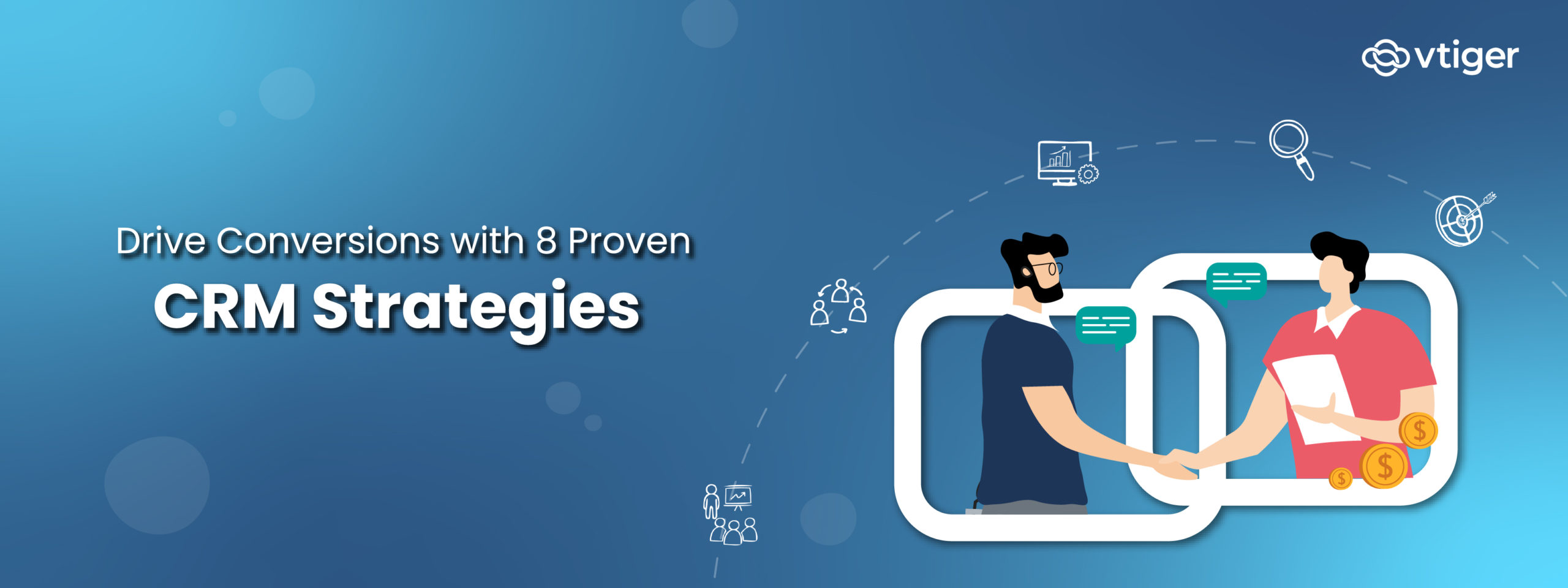I can remember my first time reviewing CRM software. It was a little over a year ago and I was thrown into the deep-end with Vtiger CRM. The options and customization were overwhelming, but I was excited and eager to learn. I was introduced to the sales technology landscape for 2018 as I became more comfortable with Vtiger. This was just for the sales side of the business and I was amazed at the number of options available to choose from. The more recent sales technology landscape for 2019 gives a recent view of the landscape. As time went on, I learned more about the recent trends within the CRM space and believe they can be an invaluable tool when analyzing a CRM for your own company.
One of the first steps to CRM analysis is to fully understand what a CRM is and how it matches your business needs. Once you understand what you are looking for in a CRM, you will want to review a CRM software’s recent innovations. Software and hardware are evolving at revolutionary speeds. Companies in the CRM space are integrating those new technologies and concepts to match customer requirements. You will want to make sure the CRM of your choice continues to innovate and follows the trends I have listed below. I recommend using resources such as G2 and Capterra to help with this process. These are review sites that make use of highly vetted customer and professional reviews to give a full look at each CRM software.
A brief overview of the five topics is available in the infographic below. You can also click here to view the full infographic.
1. Artificial Intelligence
Have you seen the films Blade Runner or Ex Machina? They are two of my favorites. I always have a soft spot for Science Fiction movies. If you’re not familiar, Artificial Intelligence and technological advancements in these films have grown at astounding speeds. Artificial intelligence is shown as a possible danger to society with humans having allowed AI to become sentient. Luckily, this fatalistic depiction of Artificial Intelligence is very far off from its actual use and capabilities in modern software.
Today, CRM software companies are utilizing AI to increase productivity. AI use in CRM software often includes analyzing the emotional state of a call or meeting based on historical data. This analysis is a great way to understand how an Opportunity is progressing. Another common way AI is used is through accurate Lead Scoring. These insights allow a salesperson to quickly deduce which leads they should focus on and which leads require further conversations to understand the BANT of the company better.
Additionally, AI is used in many other meaningful ways to simplify CRM use such as recommending the best times to call based on previous interactions and automatically collecting data from customer interactions, freeing up more time for sales representatives.
The possibilities of AI are seemingly endless as companies continue to push the boundaries of what is possible through its application. I am excited to see where AI will lead the industry, and I think many others would agree when I say AI is here to stay.
2. Mobile CRM Use
I am not old enough to remember the advent of the first cell phones, but I often think back to the stories my father likes to share. He mentions his time in high school when he was one of the first to have a blocky, mono-color cell phone. At that time, everyone had to either memorize phone numbers or keep a written list of all their friends’ and families’ numbers. It did not help that many of his friends still did not have a cell phone. He did not have anyone to call.
It’s incredible how much cell phones have changed within just a few decades. I doubt many people could imagine how integral cell phones would become to society back in the 1980s. It is the expectation now that everyone has a modern smartphone that not only makes calls but has access to the internet and an unimaginable amount of applications. In a span of eight years, from 2011 to 2019, smartphone ownership increased from just 31% to 81% according to pewresearch. It is no wonder that application development has become such a high priority for many CRM companies.
Inoppl Technologies ran a study that found 65% of sales reps that adopted a mobile CRM achieved their sales quotas while only 22% of sales reps did without adoption. With such direct benefits in mind, CRM companies have created and improved mobile applications for their software. These mobile applications allow for all of the basic functionality available in the CRM to be accessed through Smart Phones, Tablets, or other mobile devices of the agents choosing. Although travel is currently reduced, it is essential to look towards the future. Once countries begin to open up, business-related travel will increase. Having access to the CRM on-the-go will be a necessary feature for all companies looking to transition over to a CRM.
Below are just a few of the direct benefits Mobile CRM brings to users:
- Add meeting notes on-the-go which can improve data quality in the CRM
- Quickly pull-up customer or lead information to have more meaningful conversations
- Plan out your day by viewing Customer and Lead site locations within the App and check-in when you arrive
- Quickly add and attach documents
- Access your CRM records offline
Mobile phones will continue to be a large part of business communication in the future, and CRM companies are innovating to become a large part of that use.
3. Socialization
Although not directly related to CRM innovation, I was impressed with Arby’s elaborate art creations using their food and paper products as the art supplies. The marketing campaign demonstrates how a company can relate to their customers while still promoting their product on social media. Capitalizing on these marketing campaigns is where a CRM can help.
Social media has become the new way of communication for both small and large businesses. It is both a free and easy way to market your product or service to the correct demographic and location. With their large user bases, it is easy to see why.
Facebook is a very large social media platform for both regular users and companies. More than 80 million small businesses alone currently have Facebook Pages and the platform sees 1.73 billion users visiting the site daily. Facebook is not alone in touting such large user numbers. Youtube has roughly 2 billion active monthly users. LinkedIn can see upwards of 310 million active users monthly while also being the number one content-sharing channel for Business-to-Business marketers. Twitter also has a very large user base specifically seeing 186 million monetizable daily active users.
With such large audiences, if you aren’t yet, you should begin marketing on social media and compiling those leads and conversations in a CRM tool.
Many CRM software applications offer Facebook Integrations, which can make it simpler to bring Facebook conversations and leads into the CRM. This includes both Lead generation through Facebook Lead Ads and bringing conversations in Facebook Messenger over to the CRM so it can be continued within the CRM by the support or sales team.
I view LinkedIn as a professional form of social media as many business professionals have accounts and post regularly. LinkedIn is an easy platform for Sales Reps to find prospective customers and new leads. Sales Reps, however, do not want to spend their time manually entering each lead into a CRM. Luckily, LinkedIn itself offers the LinkedIn Sales Navigator. This tool allows for better lead generation within the platform. On top of that, CRM software has both direct and indirect integrations available to pull those leads into the CRM software.
In addition to just LinkedIn, CRM companies are beginning to create integrations for all of the available social media platforms through Gmail Add-Ons and other CRM integrations. With these tools, leads can be created quickly. Companies everywhere are finding new and innovative ways to utilize social media and it is interesting to see how communication is continuing to evolve for both companies and consumers.
4. Real-Time Support
Increasing customer satisfaction, specifically for subscription-based services, is an excellent way to reduce customer turnover.
Customer satisfaction and reduced turnover are directly related to the quality of customer service they receive. Verint conducted a study that analyzed the link between customer service and retention. In this study, they found both speed and convenience within customer service are what drives customer loyalty. Specifically, 46% of those surveyed related their positive customer service experience with the speed in which it was handled. This convenience and speed can be achieved by offering multiple channels through which the customer can reach out to your support team.
Live chat through your website or product is one way you can offer real-time support for your customers. Most CRM companies have a Live Chat feature available through outside integrations while fewer offer one directly within the CRM itself. Live chat does still require that the customer or leads visit your website or platform first and remain there for the duration of the chat. To supplement the Live Chat feature, it is best to offer further text-based outreach methods through third-party messengers.
WhatsApp has become one of those major communication platforms boasting 1.5 billion users in 180 countries. Multiple CRM companies noticed this trend and created a direct integration with WhatsApp through the CRM. Although communication will need to be initiated by the lead or customer, having this additional method of communication available allows for more versatility.
Although my final feature, phone calls, has been available within CRM software for a long time now, CRM companies are continuing to add new integrations for their system. Many systems allow for custom integrations to be built through API’s as well if a direct integration to your phone system is not available.
Additionally, the phone call records can now have the recordings directly linked within the CRM to the contact record. These records allow for sales and support reps to look back through previous interactions quickly.
Standard outreach methods are also available through CRM software, such as email. Making use of these and many more communication channels allows for even greater customer service and sales outreach.
5. Ease of Use
I know I’ve become frustrated with products before. Some have a high learning curve while others just have poor UI design. Recently, I found a great example of bad UI design where a hand crank is used to read the Terms of Service.
Now, most CRM companies want to avoid having a clunky UI design. The push for UI optimization and for the CRM configuration to be easily understood by both new and veteran users is one of the most significant trends in CRM software. This optimization is often done through guided tutorials, having a responsive support team, continuing to build upon already existing features, and integrating AI mechanics to alleviate manual tasks and reduce confusion and mistakes.
|
The CRM technology space is growing at a very quick rate which can be difficult to keep up with. The options are often overwhelming. Whether you are searching for a CRM for the first time or reviewing your current one, I recommend researching how your CRM is following each of the trends I mentioned above. A great starting point for your research is utilizing G2 and Capterra. These review sites allow you to review each CRM individually and compare them to others. This first step will be a great starting point for learning more about CRM functionality and where the technology will be in the future. |




